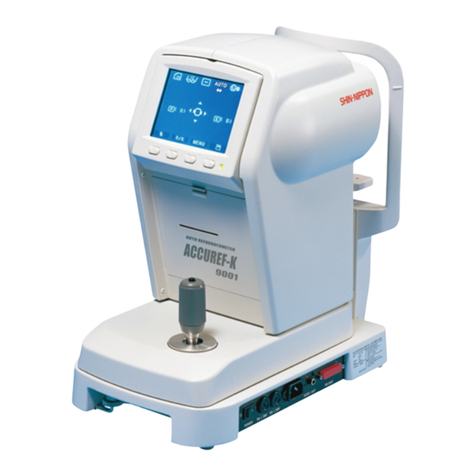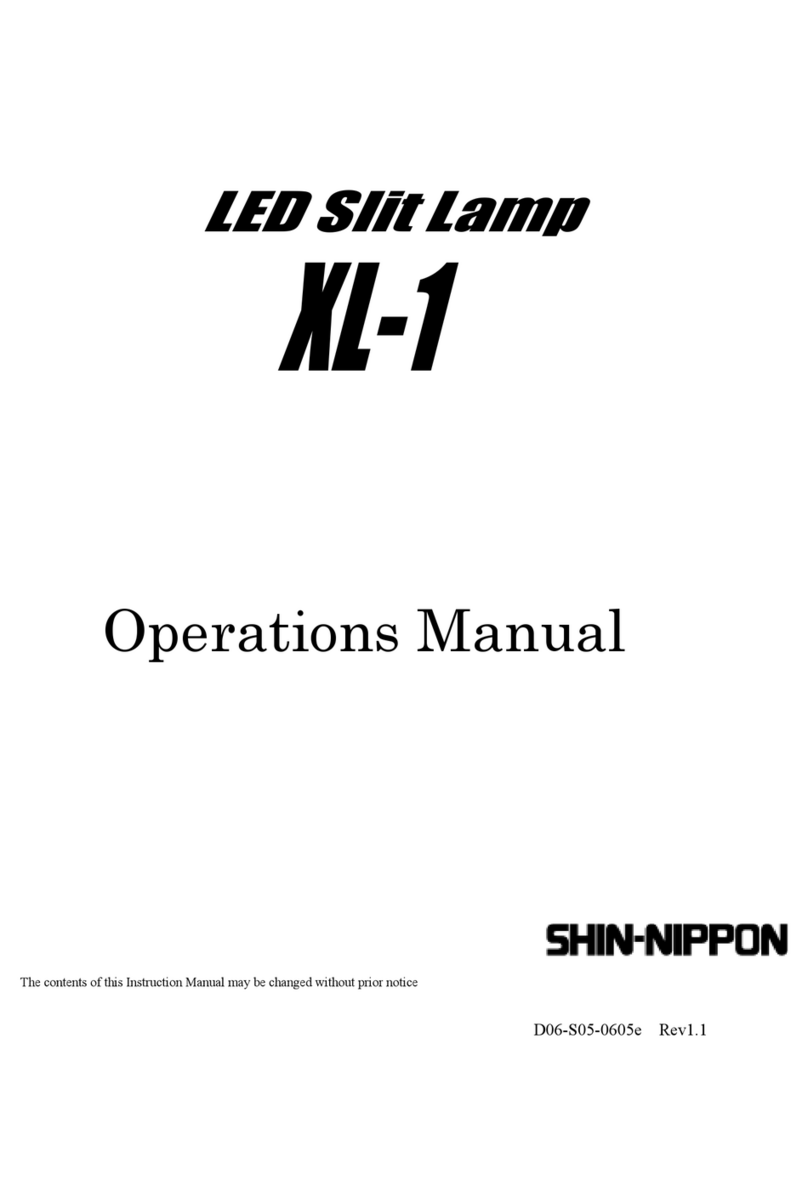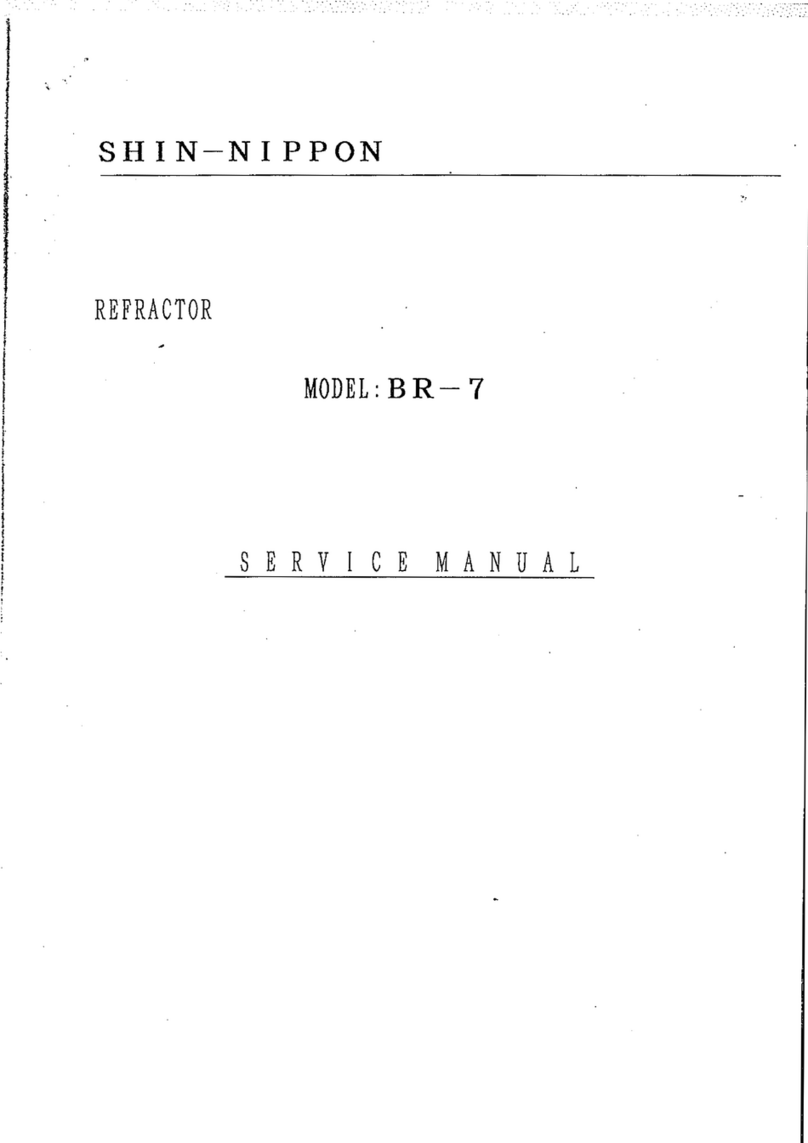
2
1. Specification
(1) Model: REFRACTOR BR-7
(2) Measuring range:
Near sight: 0.00 ~-19D, 0.25D interval
Hypermetropia: 0.00 ~+16.75D, 0.25D interval
(It is possible to measure at 0.12D interval when using a built-in assistance lens.)
Astigmatic: 0.00 ~-6.00D, 0.25D interval
(It is possible to measure up to -8.00D when using attachment lens -2D.)
(It is possible to measure at 0.12D interval when using attachment lens 0D.)
(The astigmatic axis is 0 ~180 degree, 5 degree interval scale.)
(3) Cross cylinder: +/-0.25D (+/-0.37, +/-0.50D are an option.)
(4) Rotary Prism: 0 ~20△, 1△interval scale
(5) Assistance lens:
R ——— Lens for Retinoscope (S+1.50D)
P ——— Polarization lens
RMV ——— Perpendicular red Maddox (WMV perpendicular white Maddox)
RMH ——— Horizontal red Maddox (WMH level white Maddox)
R side ——— Red filter (Green filter on L side)
+.12 ——— Spherical lens +0.12D
PH ——— Pinhole
6△U ——— Separation prism (the frame on L side is 10*I)
+/-.50 ——— Fixation cross cylinder
OC ——— Shelter board
(6) Pupil distance: 48 ~75mm, 1mm interval scale
(7) Concentration: △-400 mm
(8) Forehead support control: 16mm
(9) Weight: About 4.25 kg
(10)Size: W318 x D293 x H96
(11)Accessories: Near point scale, near point folder
Near point card
Assistance lens (Two C-0.12, two C-2.00)
Vinyl covers for dust protection

























